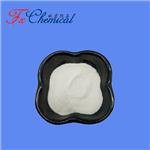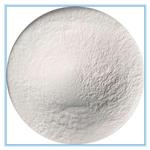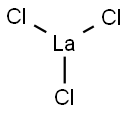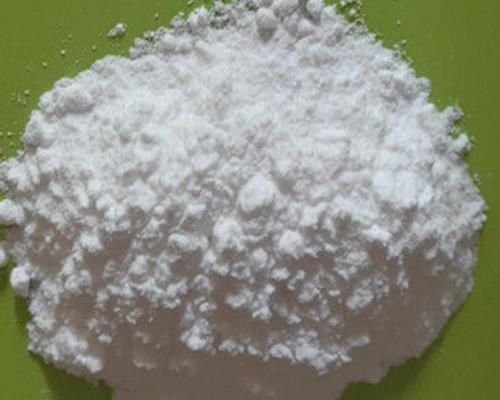Lanthanum(III) Chloride: Unveiling Its Neurotoxic and Antitumor Effects
Lanthanum(III) chloride, a catalyst of considerable importance, plays a crucial role in diverse chemical reactions. Besides, Lanthanum chloride (LaCl(3)) is a good inhibitor of both the cytosolic and mitochondrial thioredoxin reductase with IC(50) values of 1.75 and 7.46 μM, respectively. On the contrary, the related enzyme glutathione reductase is not inhibited by lanthanum ions. A very small amount of Lanthanum(III) chloride is enough to quickly reduce the phosphate concentration in the tank.

Lanthanum(III) chloride Impairs Learning and Memory and Induces Dendritic Spine Abnormality
Lanthanum (La) is a natural rare earth element. It has neurotoxic effects which can impair learning and memory in humans. However, its mechanism of neurotoxicity is unclear. Learning and memory are coordinated by dendritic spines which form tiny protruding structures on the dendritic branches of neurons. This study investigated the effect of Lanthanum(III) chloride exposure to pregnant and lactating rats on the offspring rats’ learning and memory ability. Exposure to and REEs intake exert adverse effects on human health. Previous studies have shown that REEs ingestion can cause accumulation in various organ tissues and exhibit an uneven distribution. Other studies have shown that exposure of pregnant rats to Lanthanum(III) chloride by gavage feeding from the onset of pregnancy to 6 months after weaning of the offspring increased La content in the blood, hippocampus, and cortex of the offspring in a dose-dependent manner. This suggests that La accumulates in the hippocampus and causes its toxic effect.[1]
The MWM test is a classic approach used to identify spatial learning and memory ability in rats. In this study, maternal rats were fed with an aqueous solution containing Lanthanum(III) chloride during pregnancy and lactation. MWM in the offspring rats was carried out after weaning to verify that the animal model had been built successfully. The results showed that when looking for the underwater platform on the 3rd and 4th days of training, the offspring rats with La treatment showed weaker learning ability than those in the control group. In subsequent place navigation tests and spatial exploration tests, the learning and memory ability of Lanthanum(III) chloride-treated groups gradually decreased with increasing LaCl3 dosage. These results confirmed that maternal exposure to Lanthanum(III) chloride during pregnancy and lactation impaired spatial learning and memory ability of offspring rats. The results showed that the total density of dendritic spines progressively decreased with the increase in the LaCl3 dose.
In this study, rats were divided into 4 groups and given distilled water solution containing 0%, 0.125%, 0.25%, 0.5% LaCl3, respectively, and this was done from conception to the end of the location. The effects of LaCl3 on spatial learning and memory ability in offspring rats and in the development of dendritic spines in CA1 pyramidal cells were investigated. The results showed that Lanthanum(III) chloride impaired spatial learning and memory ability in offspring rats, and decreased dendritic spine density during development. In addition, Lanthanum(III) chloride can affect the expression of CaMKII, miRNA132, p250GAP, Tiam1, PARD3, and down-regulated the activation of Rac1 which led to a decrease in the expression of Rac1/PAK signaling pathway and downstream regulatory proteins Cortactin and actin-related protein 2/3 complex (Arp2/3 complex). This study indicated that the learning and memory impairment and the decrease of dendritic spine density in the offspring of LaCl3 exposure may be related to the down-regulation of the Rac1/PAK signaling pathway regulated by Tiam1 and p250GAP.
Effect of Lanthanum(III) chloride on tumor growth
It has been reported that lanthanum complexes were effective candidate drugs in the treatment of malignant tumors. For instance, lanthanum complex has demonstrated considerable cytotoxicity on human cervical carcinoma cells in vitro. Lanthanum(III) chloride (LaCl3) also significantly inhibited the growth and induced the apoptosis of leukemia cell lines, HL-60 and NB4 In the present study, it was observed that LaCl3 promoted the cisplatin-induced inhibition of ovarian cancer cell growth and tumorigenesis in a mouse model of ovarian cancer. In addition, this process was associated with the alteration of the expression levels of specific tumor proteins. The current research provides novel in vitro and in vivo evidence to support the potential clinical application of Lanthanum(III) chloride in the treatment of ovarian cancer.[2]
Although it has been previously reported that Lanthanum(III) chloride affects multiple tumor growth based on cell-based assays and animal experiments, its precise biological role remains largely unclear. Therefore, further investigations on the underlying mechanisms are required. The lanthanum compound KP772 has anticancer properties associated with p53-independent G0/G1 arrest and apoptosis induction. Apoptosis is a critical stage in the cell cycle, maintaining the balance between proliferation and cell death. In the present study, it was demonstrated that the application of Lanthanum(III) chloride increased the percentage of TUNEL-positive COC1 or COC1/DDP cells induced by cisplatin, indicating that LaCl3 was able to interfere with the cell cycle progression and promote apoptosis. In conclusion, the results of the present study suggested that the combination of cisplatin with LaCl3 was capable of inducing ovarian cancer cell apoptosis in vitro and inhibiting tumor growth in vivo. The current study provides novel evidence to establish an experimental basis for the clinical application of Lanthanum(III) chloride as an anticancer drug. Further studies are required to reveal the mechanism involved in the synergistic role of LaCl3 and cisplatin.
Lanthanum(III) chloride Induces Axon Abnormality
Lanthanum (La) is a natural rare-earth element that can damage the central nervous system and impair learning and memory. However, its neurotoxic mechanism remains unclear. In this study, adult female rats were divided into 4 groups and given distilled water solution containing 0%, 0.125%, 0.25%, and 0.5% LaCl3, respectively, and this was done from conception to the end of the location. Their offspring rats were used to establish animal models to investigate LaCl3 neurotoxicity. Primary neurons cultured in vitro were treated with Lanthanum(III) chloride and infected with LKB1 overexpression lentivirus. The results showed that LaCl3 exposure resulted in abnormal axons in the hippocampus and primary cultured neurons. Lanthanum(III) chloride reduced the expression of LKB1, p-LKB1, STRAD and MO25 proteins, and directly or indirectly affected the expression of LKB1, leading to decreased activity of LKB1-MARK2 and LKB1-STK25-GM130 pathways. This study indicated that LaCl3 exposure could interfere with the normal effects of LKB1 in the brain and downregulate LKB1-MARK2 and LKB1-STK25-GM130 signaling pathways, resulting in abnormal axon in offspring rats.[3]
Current evidence suggests that cell death can lead to changes in cell morphology, such as axons retraction and microtubule severing in the early stages of neuron death. In previous studies, rats were exposed to 0, 0.25, 0.50 or 1.00% LaCl3 in drinking water during pregnancy and lactation. After weaning, young rats received 0, 0.25, 0.50 and 1.00% LaCl3 in the drinking water for 1 month. The La content in the hippocampus of offspring rats in 0.025, 0.05 and 1% Lanthanum(III) chloride groups was about 0.03 µg/g, 0.041 µg/g and 0.06 µg/g, respectively. In our study, the highest dose in vivo was 0.05% Lanthanum(III) chloride, with a shorter exposure time was less than the above study. Thus, in our study, La content in the hippocampus was less than 0.041 µg/g even at 0.5% LaCl3 exposure, suggesting that the concentration of La accumulated in the hippocampus of our animal model was very low. It can be speculated that there will be almost no hippocampal cell death at this dose.
References
[1]Sun W, Yang J, Hong Y, Yuan H, Wang J, Zhang Y, Lu X, Jin C, Wu S, Cai Y. Lanthanum Chloride Impairs Learning and Memory and Induces Dendritic Spine Abnormality by Down-Regulating Rac1/PAK Signaling Pathway in Hippocampus of Offspring Rats. Cell Mol Neurobiol. 2020 Apr;40(3):459-475.
[2]Wang F, Zhu Y, Fang S, Li S, Liu S. Effect of lanthanum chloride on tumor growth and apoptosis in human ovarian cancer cells and xenograft animal models. Exp Ther Med. 2018 Aug;16(2):1143-1148.
[3]Song Z, Mao H, Liu J, Sun W, Wu S, Lu X, Jin C, Yang J. Lanthanum Chloride Induces Axon Abnormality Through LKB1-MARK2 and LKB1-STK25-GM130 Signaling Pathways. Cell Mol Neurobiol. 2023 Apr;43(3):1181-1196. doi: 10.1007/s10571-022-01237-0. Epub 2022 Jun 5. Erratum in: Cell Mol Neurobiol. 2023 Apr;43(3):1197-1198.
Lastest Price from Lanthanum(III) chloride manufacturers

US $0.00/KG2025-04-21
- CAS:
- 10099-58-8
- Min. Order:
- 1KG
- Purity:
- 98%min
- Supply Ability:
- 30tons/month

US $6.00/kg2025-04-21
- CAS:
- 10099-58-8
- Min. Order:
- 1kg
- Purity:
- 99%
- Supply Ability:
- 2000KG/Month


